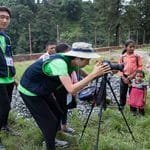
Journalism in Nepal has transformed vastly in recent years, both in terms of the number of media outlets and media practitioners. Public access to media is also developing at a stunning rate. Printing houses and media channels continue to grow. FM radio stations are broadcasting from numerous villages. While this measurable development continues, focus has now moved to the requests for quality and reliability of information. More than half of the Nepali journalists are between 19 and 30 years of age with women as a minority in number.
In this age of information, media houses of different shapes and sizes have been engaged in cut-throat competition. And the public do not observe a healthy competition at many instances. Political advocacy and influence is very common in the sector of journalism. As a result, the information sometimes get manipulated and customized. Journalists approve that code violation has habitually affected their career. Major challenges are mainly biased image of media personals, absence of assurances from the state, prejudiced media houses and shortage of technological resources and training. Journalists are contented with their handling of current subject matters like constitution, governance, politics, etc. but the public reaction is quite the opposite. Survey suggests more than two-third of the public believe that Nepali media is unreliable.
Over 40% of the journalists reported their dissatisfaction with achievement in the profession. Nepal still needs to focus on developing immunity in the sector of Journalism. It is highly necessary to address the shortcomings and help raise the determination and assurance of the journalists and cause multidimensional progress of the sector of journalism. There is still need for Journalism in Nepal to struggle for their professional and physical security as well as to establish freedom of press and of expression.
A Brief History of Journalism in Nepal
In Nepal, traditional communication was popular for a long time and is still practiced in rural parts of Nepal where telecommunications have not reached yet. A person namely “Katuwal” was appointed by village committee who was responsible for broadcasting of information from person to persons.
The history of Nepali press is traced back to 1851 when Rana Prime Minister Jung Bahadur Rana introduced a printing press. And, in 1901 the state-owned newspaper Gorkhapatra was launched. But Nepal’s practical history begins in the 1950s after the fall of Rana rule when several journalists were in charge in publishing newspapers. Few other milestones in Journalism in Nepal are mentioned below:
- 1851 The first printed press was installed by a Rana Prime Minister which was used after several decades.
- “Gorkha Bharat Jeevan” the first news magazine published in Nepali language. It was printed in India.
- 1898 “Sudha Sagar” the first monthly magazine published in Nepal.
- 1901 First Nepali state-owned newspaper was launched namely “Gorkhapatra”.
- 1950 Following the establishment of a democratic political system, the first daily newspaper published by a non-running political power was born namely “Awaj”. Its publication barely lasted two years.
- 1951 “Tarang” the first weekly newspaper published in Hindi.
- 1953 First monthly magazine published in English: Nepal Guardian. Two years later, the first daily newspaper in English appeared called “The Commoner”.
- Political issues were omnipresent with 35 political publications.
- During the Panchayat period, journalism became prosperous in Nepal. A Ministry of Communication, a Press Council and a News Agency were formed.
- 1990 The People’s Movement urged greater press freedom, this ended up being a constitutional right.
- During the same decade World Wide Web came into existence.
- 1993 First Nepalese online newspaper “The Nepal Digest” was published from the U.S.
- 1995 The Kathmandu Post published its first online news.
In 2001, the Nepalese press suffered from repression during the state of emergency set up by King Gyanendra. Likewise, the sensitive situation with the Maoists continued to put Nepalese press under pressure. Despite the restoration of Democracy in 2006, the country’s media faced significant harassment and obstacles. However, it contributed in carrying the country back to democratic path as part of the 2006 April Uprising. During the period April 25, 2006 to April 12, 2008 overall 676 journalists and media workers experienced several occasions of press freedom violation.
The promulgation of Right to Information Act-2064, Working Journalist Act-2064 and Constitutional Guarantee of Freedom of Press and Expression in the Interim Constitution-2064 have been the significant achievements in the history of Journalism in Nepal.
The major goal of Journalism program is to support the development of the most marginalized communities by providing them visibility and promoting our relationship with partners. The program puts a major focus on the social structures and practises prevalent in the community. Authenticity and transparency is the two key focus of VIN’s Journalism Program in Nepal.
Our Journalism Program enables interns or volunteers to develop a portfolio of work in an international context. The program is conducted in Nepal in partnership with national daily, weekly, fortnightly and monthly publications. You can work in Photo Journalism, Print Journalism, and Film and Documentary Making projects under Journalism program. If you are already a practicing journalist, Journalism volunteering will broaden your experience and show you a different way of working in journalism. The opportunity not only allows you to produce professional work for a large publication but to gain an insight into how the publication is run. Whether you wish to work in print or celluloid you will gain invaluable experience as you traverse your career path.

 Intern
Intern Donate
Donate Sponsor a child
Sponsor a child Partner
Partner Promote
Promote Fundraise
Fundraise Fellowships and staff exchanges
Fellowships and staff exchanges


 Member of
Member of